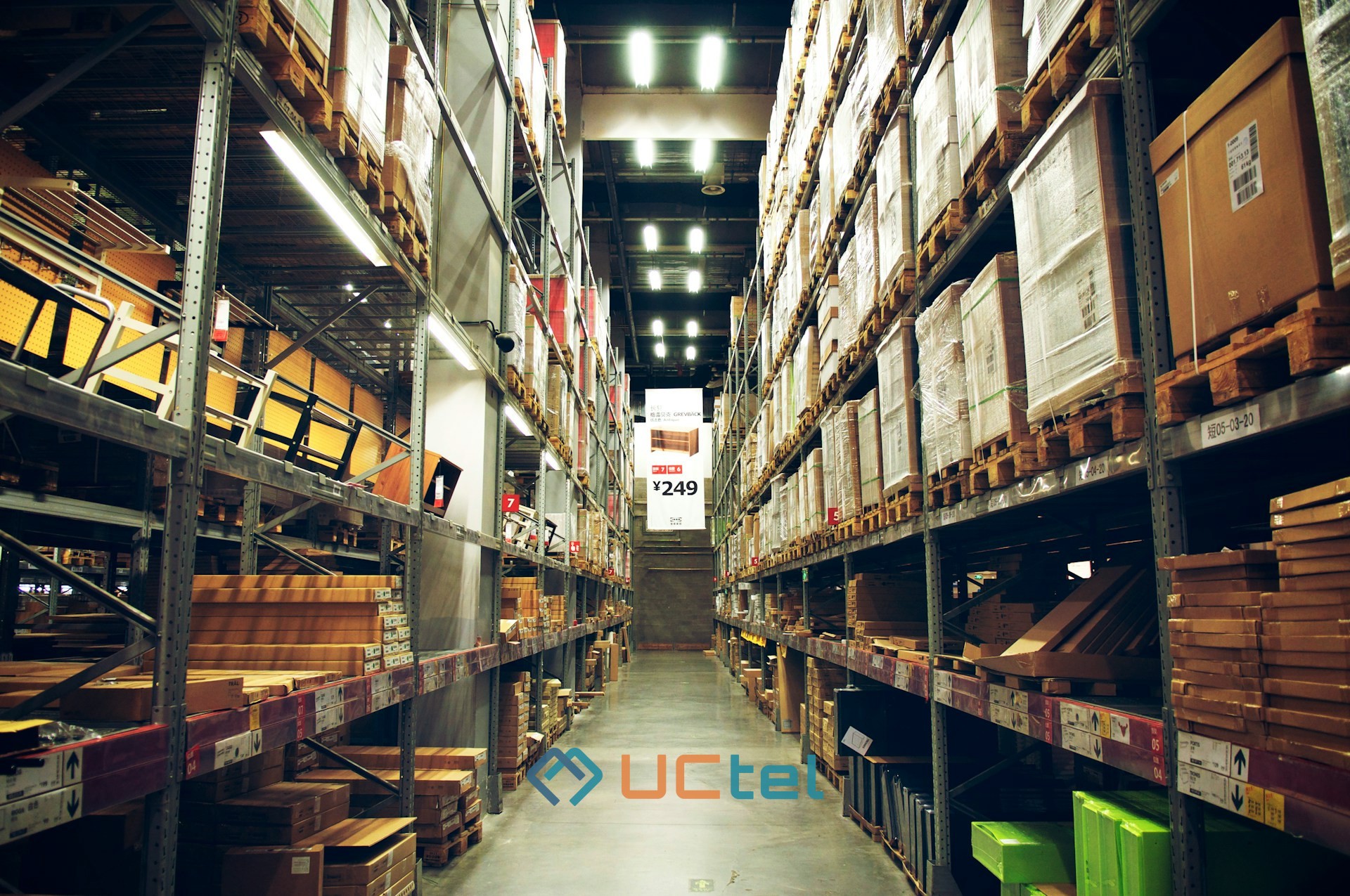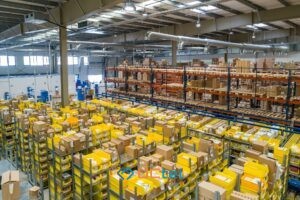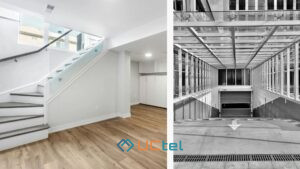
Best Mobile Signal Booster Warehouse Solutions to Improve Reception in Large Buildings
Table of contents
- 1. Understanding poor mobile signal in warehouse environments
- 2. How mobile signal boosters work to enhance warehouse connectivity
- 3. Top signal booster solutions for warehouse applications
- 4. Installation considerations for warehouse signal boosters
- 5. Benefits and ROI of implementing signal boosters in warehouses
In today's connected world, warehouses and large commercial buildings often struggle with poor mobile reception. When mobile signals fail to penetrate deep into these structures, operations suffer and productivity plummets.
According to recent industry data, over 74% of warehouse managers report mobile connectivity issues affecting their daily operations. Mobile signal booster warehouse technology has evolved significantly over the past decade, providing robust solutions for even the most challenging industrial environments.

UK Warehouse
Understanding poor mobile signal in warehouse environments
Warehouses present unique challenges for mobile connectivity. The primary culprits behind poor reception include the physical structure itself and its location. Commercial and industrial buildings typically feature materials that naturally block radio frequency (RF) signals. These include:
- Reinforced concrete walls and floors
- Metal roofing and siding
- Steel support structures
- Energy-efficient low-E glass windows
- Thick insulation materials
These construction elements can reduce signal strength by 50-90%, creating what technicians call "dead zones" throughout the facility. Additionally, the sheer size of warehouses means that even if signals penetrate the outer walls, they weaken substantially before reaching inner areas. The distance from mobile towers further compounds these issues, particularly in industrial zones located away from population centres.
How building construction affects signal strength
Each building material impacts mobile frequencies differently. Metal surfaces reflect and scatter radio waves, while concrete absorbs them.
Modern energy-efficient windows contain metal oxide coatings that block RF signals along with heat. Even the building's orientation relative to nearby towers affects reception quality. In multi-story warehouses, signals weaken dramatically with each floor traveled, creating cascading connectivity problems throughout the structure.
- Signal attenuation through concrete: 10-30 dB loss
- Metal surfaces: Up to 40 dB loss
- Low-E windows: 30-50 dB reduction
- Each floor level: Additional 10-15 dB loss
Impact of poor connectivity on warehouse operations
Inadequate mobile reception directly affects business performance in warehouses. Inventory management systems, barcode scanners, and mobile communications all rely on stable connections.
When signals fail, operations slow dramatically, causing missed deadlines and frustrated staff. In 2024, a study by the Warehouse Management Association found that poor connectivity costs the average warehouse operation approximately $87,000 annually in lost productivity.
How mobile signal boosters work to enhance warehouse connectivity
Signal boosters operate on a simple yet effective principle: they capture existing outdoor signals, amplify them, and redistribute them inside the building. This three-part system creates a mobile microclimate that overcomes the building's inherent signal barriers. Modern booster technology supports multiple frequency bands simultaneously, ensuring compatibility with all major carriers and networks including 5G.
Essential components of a signal booster system
A complete signal enhancement solution includes three primary components working in tandem:
- Outside antenna (donor antenna) - Captures weak signals from the nearest tower
- Signal amplifier (booster unit) - Increases signal strength across supported frequency bands
- Inside antenna(s) - Broadcasts amplified signals throughout the indoor environment
These components connect via high-grade coaxial cabling that minimises signal loss during transmission. Commercial-grade systems feature multiple indoor antennas strategically positioned to create uniform coverage zones throughout large spaces. Depending on warehouse size, installations may include 4-12 internal antennas connected to a central amplifier.
Technical specifications and performance metrics
When evaluating booster systems, several key technical parameters determine performance:
- Gain (measured in dB): Typically 65-85 dB in industrial systems
- Maximum output power: 15-27 dBm depending on model
- Supported frequency bands: 600 MHz, 700 MHz, 850 MHz, 1700/2100 MHz, 1900 MHz
- Impedance: 50-ohm (N connectors) or 75-ohm (F connectors)
Higher gain specifications translate to stronger signal amplification, while output power determines how effectively the system can overcome interference. Industrial-grade boosters balance these specifications to provide optimal performance in challenging environments.
Top signal booster solutions for warehouse applications
Warehouses require robust solutions engineered specifically for large, interference-rich environments. The market offers various tiers of products based on coverage area requirements and user density.
High-capacity industrial systems
Large-scale warehouse operations benefit from enterprise-grade boosters capable of covering up to 30,000 square meters. These systems support hundreds of simultaneous users across multiple bands and carriers.
They feature automatic gain control that adjusts amplification levels as external signal conditions change. Some models include fibre DAS technology for extending coverage in exceptionally large facilities or campus environments.
- Coverage area: Up to 100,000 sq. ft. (expandable with additional antennas)
- Simultaneous users: 200+ per frequency band
- Special features: Network monitoring, remote management capabilities
Medium-sized building solutions
For warehouses between 4,500-12,000 square meters, mid-range boosters offer excellent performance without the higher costs of enterprise systems.
These units typically support coverage up to 10,000 square meters and accommodate dozens of simultaneous users. Professional installation ensures optimal placement of components for maximum coverage efficiency.
Cost-effective options for smaller warehouses
Smaller facilities benefit from compact systems designed for spaces up to 4,500 square meters. These affordable solutions still deliver significant improvements in call quality and data speeds while supporting all major carriers. They require minimal technical expertise to install and maintain, making them ideal for growing businesses.
Installation considerations for warehouse signal boosters
Proper installation dramatically impacts system performance. Complex warehouse environments require careful planning and professional assessment to maximise coverage and minimise interference.
- Site survey and signal mapping to identify existing signal strengths
- Strategic antenna placement for optimal reception and distribution
- Cable routing plan to minimise signal loss
- System testing and calibration after installation
Professional vs. DIY installation options
While small systems may be suitable for DIY installation, commercial warehouse deployments benefit from professional expertise. Certified installers conduct thorough site surveys using specialised equipment to measure existing signal strengths throughout the facility.
They identify optimal antenna placement locations and ensure proper separation between outdoor and indoor antennas to prevent oscillation issues.
Optimising antenna placement for maximum coverage
Strategic antenna positioning significantly impacts system performance. Outdoor antennas require clear lines of sight to nearby towers, while indoor antennas need careful distribution to eliminate dead zones. Professional installers use sophisticated RF modeling software to predict coverage patterns and optimise component placement before installation begins.
Benefits and ROI of implementing signal boosters in warehouses
Investing in signal enhancement technology delivers measurable returns through improved operations, enhanced communication, and increased staff productivity. Warehouse managers report significant improvements in order fulfillment rates and reduced errors after implementing comprehensive signal solutions.
- Reduced communication delays and missed calls
- Faster data transmission for inventory systems
- Improved emergency response capabilities
- Extended battery life for mobile devices
Operational improvements and productivity gains
With reliable connectivity throughout the facility, warehouse teams operate more efficiently. Mobile scanning devices maintain consistent connections to central databases, voice communications remain clear throughout the building, and cloud-based applications respond quickly. These improvements translate directly to better performance metrics and higher customer satisfaction levels.
Long-term value and future-proofing connectivity
Modern signal boosters support current and emerging network technologies, including 5G frequencies. This future-proof design ensures that investments made today continue delivering value as carriers upgrade their networks. Comprehensive warranty coverage and ongoing technical support provide additional long-term value, protecting the initial investment for years to come.
Questions about our mobile signal boosters? We’re here to help, contact UCtel now.







